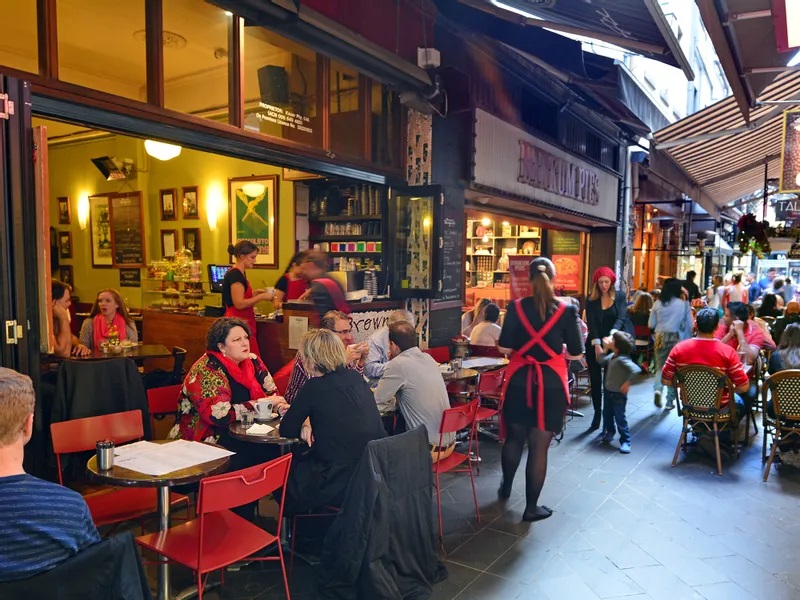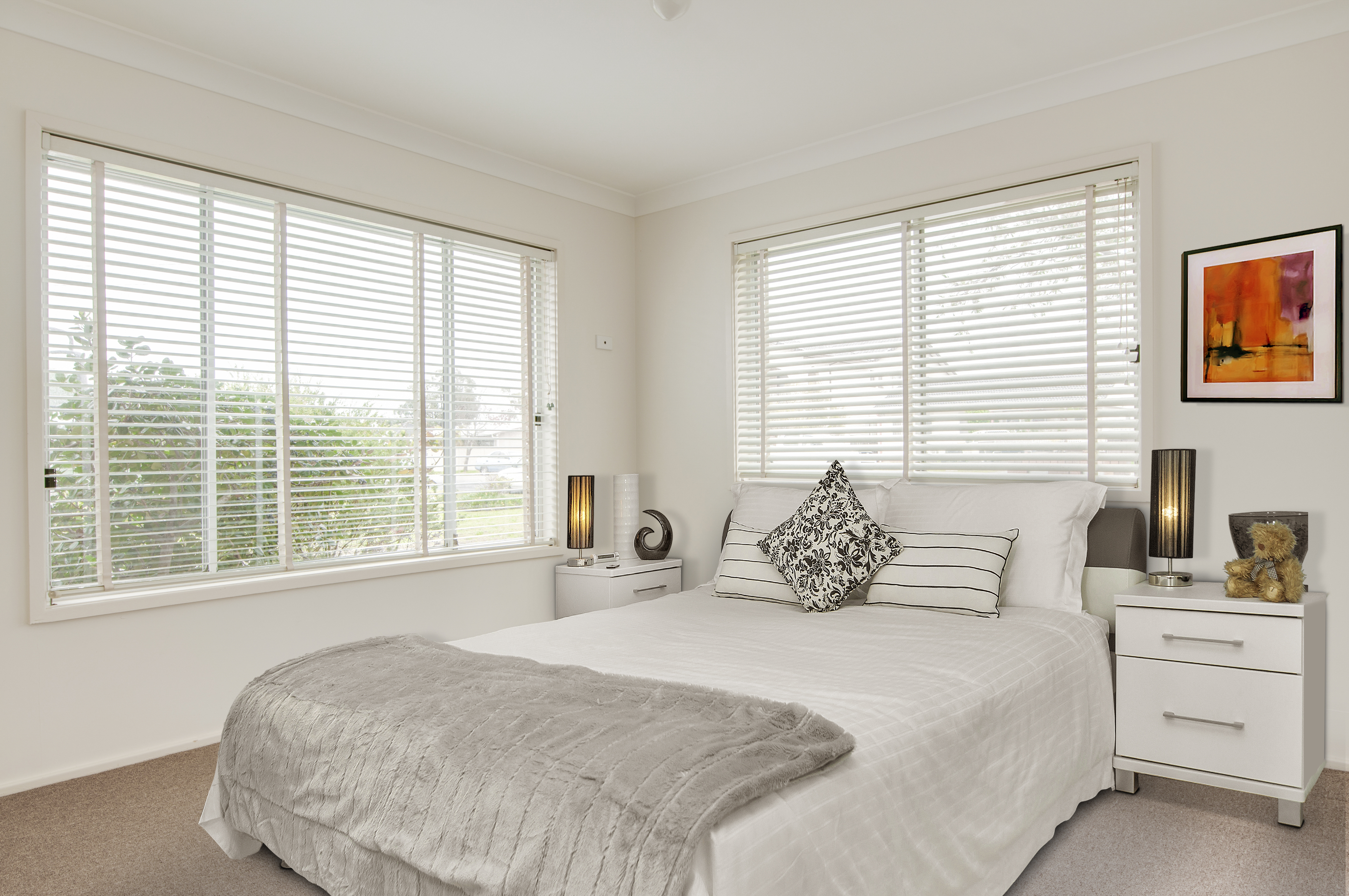City life: The future of CBD living after historic regional shift
Bright lights, buzzing baristas and the hum of office workers are all synonymous with city life, but the allure of Australian CBDs has been stifled during the pandemic causing many residents to leave.
Australian CBDs lost their colour in 2020 as workers abandoned offices and businesses and entertainment precincts shut up shop during lockdowns. Bustling streets that once drew in the crowds effectively became ghost strips.
With little to do and a new work-from-home lifestyle, homebuyer and renter preferences turned towards regional areas in one of the biggest regional shifts in recent history.
But do these trends signal a long-lasting attitude change towards CBD living?
Director of economic research at realestate.com.au Cameron Kusher said while the regional shift in 2020 was significant, as workers return to CBD offices and hospitality and entertainment venues reopen, people will likely be drawn back to the city.
“There will always be people who are attracted to city living, regardless of whether they work in the CBD or not,” he said. “However, COVID has impacted this desire significantly.
“Most of our CBDs have lost the vibrancy they once had with fewer people in offices, fewer restaurants, bars and cafes open and just fewer people overall.
“The return of these things will be imperative to drawing back residents post-COVID”.
The biggest regional shift in a decade
The onset of the pandemic in March 2020 saw a big spike in searches for properties outside of the capital cities on realestate.com.au, and by year’s end there had also been a big increase in regional sales.
This activity translated to price growth throughout 2020 with regional markets recording double the growth (9.6%) of capital cities (4.8%). But so far in 2021, capital city markets are leading the charge, according to the REA Insights Home Price Index report for February 2021.
In February, dwelling prices in capital city markets increased 0.4% compared to 0.3% in regional areas.
Mr Kusher said while regional property prices will likely continue to grow in 2021 on the back of ongoing strong demand and low borrowing costs, city prices will keep bouncing back.
“As vaccines are rolled out I suspect we will see cities return to more normal conditions and interest in properties in those areas will come back,” he said.
Lecturer of property and real estate at Deakin University Jerry Liang said a regional shift like the one recorded in 2020 has not been seen in Australia for a decade.
“Our modelling shows that the significant regional shift of housing demand that lasted for up to three quarters [in 2020] was not seen in the past 10 years. It is unique to this COVID pandemic,” Dr Liang said.
“After the COVID pandemic outbreak in late March 2020, housing values in areas with low population density and low urbanisation levels significantly outperformed areas with high population density and high urbanisation levels.
“We observed this phenomenon in both the transactional market and rental market.”

Regional property prices outpaced city prices in 2020. Picture: realestate.com.au/buy
Dr Liang said whether this decentralisation will continue long term depends on the COVID situation, recovery of the economy, government policy and future work lifestyles. However, he predicted record low interest rates would attract more investors to CBDs, across residential and commercial properties.
Has city living lost its lustre?
As many Australians get a taste of regional life during the pandemic, CBD property markets in major capitals like Melbourne and Sydney – the hardest hit by the health crisis – are in recovery mode.
Data from realestate.com.au shows rental markets in Sydney and Melbourne CBDs, which are predominantly unit markets, have experienced the most adversity following an exodus of renters many of whom are international students.
An oversupply of rental units has led to rent price drops in both cities as landlords struggle to fill their empty properties.
It is the opposite scenario for unit sale prices in Melbourne and Sydney, which have increased since the pandemic began. Supply, on the other hand, has fluctuated with the number of units for sale dropping sharply in both cities in April 2020. Listing volumes gradually picked up in Sydney after the initial lockdown period, but dropped dramatically in Melbourne in August 2020 when a second hard lockdown was enforced.
Sales agent at Sydney Cove Property – The Rocks Monique Lavers said higher-end CBD apartments typically purchased by owner-occupiers have seen strong sales during the health crisis, driven by new infrastructure in Barangaroo.
“People want accessibility to nice restaurants and parkland, so if they are downsizing or they’re empty nesters they’re considering the CBD as a viable place to live,” Ms Lavers said.
“I think that is going to continue because [Sydney CBD] is the new and exciting place to be”.

Interest in two-bedroom apartments like this one at 161 Kent Street, Sydney is picking up. Picture: realestate.com.au/buy
Ms Lavers said the one and two-bedroom apartment market has been more challenging over the past year, largely because it is investor driven.
“Obviously rents have decreased during COVID so investors have been holding off on purchasing,” she said.
“At the same time, there are some people that have seen that as an opportunity to buy in,” Ms Lavers added. “If they can buy in and hold the apartment while it’s got a slightly lower rental return, buying at a slightly more flexible price, they can sit on it and then see some good capital growth down the track”.
She described 2020 as a “moment in time” for CBD property, saying there has been a big pick up in buyer interest since December last year.
“We’re seeing a lot more buyer confidence, a lot more people through the opens for our one and two bedrooms, more movement in terms of offers and people are confident that rents will pick up as the year progresses.”
High-intent search data from realestate.com.au for March 2021 showed strong demand for CBD units in Melbourne and Sydney from both buyers and renters, relative to the average demand in other metropolitan and regional areas.
“I wouldn’t be surprised if in 12 months’ time the growth in capital cities is actually stronger than regional markets” Mr Kusher said.
Jeremy Vile, marketing manager for inner-city Melbourne developer Central Equity, said they have seen strong interest in their Melbourne Grand development, a new residential apartment tower in the heart of the CBD.
“As workers head back to the office we have seen good interest from people, who may never have considered city living previously, who want to make the shift to be closer to their workplace and other city attractions,” Mr Vile said.
“The convenience of being able to walk to their workplace, spend less time commuting and, in many cases, save on car or public transport expenses are key drivers of this.”
Mr Vile said the project was largely sold off the plan but a number of sales occurred on completion over the past few months.
“There has been a mix of buyer profiles including downsizers, professionals and people upgrading from other smaller city apartments.”

There has been strong interest in Central Equity’s Melbourne Grand residential development. Picture: Central Equity
“The building reflects the changing demographic and lifestyle [of CBD residents] by including studies in many apartments. In addition, there are expansive common areas to provide additional spaces outside the apartment to work or to meet up with family and friends.”
Mr Vile added expertly-managed apartment buildings like Melbourne Grand will be especially important post-COVID.
Vibrancy is key to attracting CBD renters and buyers
Many CBD renters and buyers have made the shift the regional areas during COVID, but their work requirements could soon see them return to capital cities, according to Mr Kusher.
“While businesses are currently happy for people to be remote and in the office less often, I suspect as the pandemic moves further behind us businesses will be keen to get more people back into offices more regularly and that will make living further away from city centres more difficult for CBD office workers,” he said.
He added vibrancy is key to boosting activity in CBD property markets post-COVID, which is the cornerstone of a new blueprint for CBD revival from the Property Council of Australia and EY.
Released in March, the report recommended government, employers and landlords work together to facilitate the return of people to CBDs via six targeted measures, including free public transport and parking for workers; late-night shopping and night-time markets; reimagining unused space; more green spaces; and more micro-mobility solutions such as e-bikes or scooters.
It found 82% of Australians are confident their nearest CBD will continue to evolve post-COVID.
Property Council of Australia chief executive Ken Morrison said the report was a blueprint for government, business and property owners to re-energise CBDs following the pandemic.

A new report from the Property Council of Australia and EY found 82% of Australians are confident their nearest CBD will continue to evolve post-COVID. Picture: Getty
“Our CBDs have been the nation’s productivity powerhouses for decades, but have been sorely challenged by COVID-19 shutdowns. It’s important for everyone that CBDs are able to reclaim this economic mantle,” Mr Morrison said.
“As more workers return to CBD workplaces, it’s important to supercharge the revival of our CBDs to underpin economic recovery. This report provides the ideas that will be central to this task.
“As this report finds, people love their CBDs and the vibrancy and opportunity they provide.”
Originally published by realestate.com.au
By Stephanie McLean




